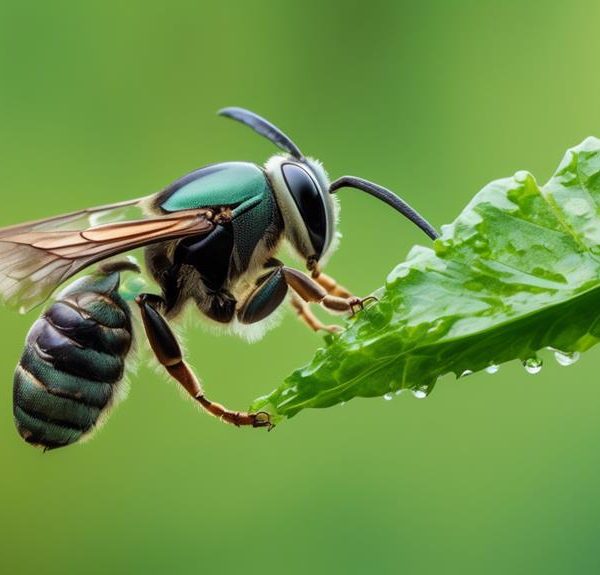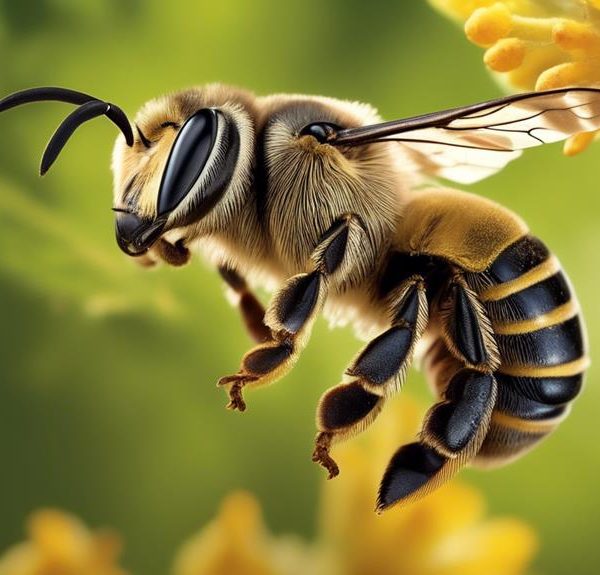Buzz into the fascinating world of Mason and Leafcutter bees to discover their extraordinary pollination rates, and why they matter.
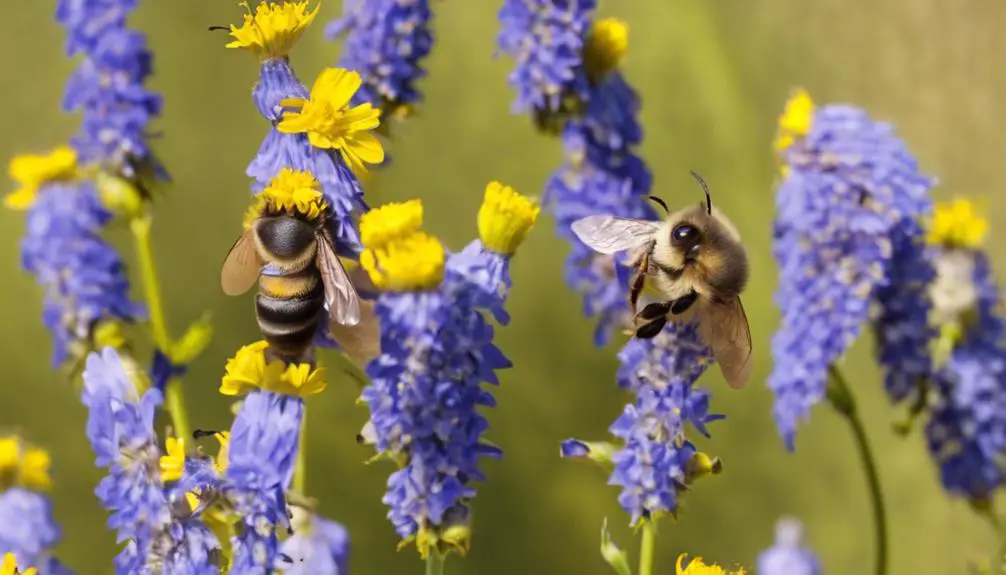
What Is the Pollination Rate of Mason and Leafcutter Bees
Did you know that Mason and Leafcutter bees are among the most effective pollinators in the insect world? It's been estimated that one Mason bee can do the work of 120 honeybees, and Leafcutter bees aren't far behind.
You may be wondering, what does this actually mean? How is the pollination rate of these solitary bees measured and compared? And why does it matter?
Well, let's embark on a journey to find answers to these intriguing questions, and in the process, explore the fascinating world of these underrated pollinators.
Key Takeaways
- Mason bees and Leafcutter bees have high pollination rates, with Mason bees at 95% and Leafcutter bees at 70%.
- Both bees play a crucial role in pollinating a wide variety of plants, increasing biodiversity.
- Mason bees and Leafcutter bees contribute to the genetic diversity of plants through cross-pollination.
- These bees' high pollination rates support food security, wildlife, and the overall health of ecosystems.
Understanding Bee Pollination
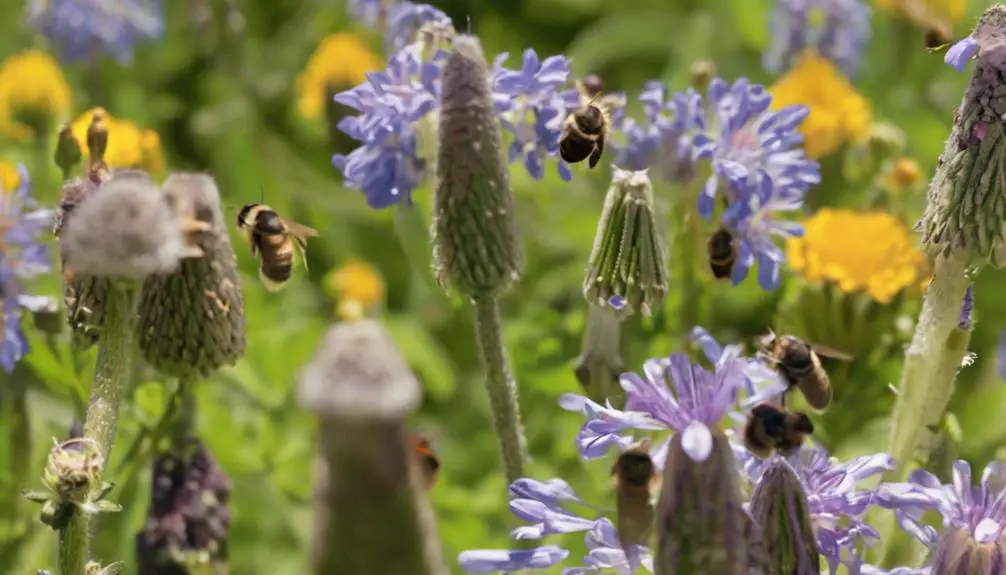
Diving into the world of bee pollination, you'll find it to be a complex, yet fascinating process that's vital for the propagation of many plant species. Bees transfer pollen, a powdery substance produced by the male part of the flower (the stamen), to the female part (the pistil). It's a bee's way of playing matchmaker for plants, facilitating their sexual reproduction.
Bees collect pollen to feed their offspring, and in the process, they inadvertently scatter the pollen onto other flowers. This transfer, which fertilizes flowers, enabling them to produce seeds and fruit, is known as pollination. The bee's fuzzy body and pollen baskets on their legs serve as perfect tools to carry and distribute pollen.
Two types of bees, Mason and Leafcutter, are particularly efficient pollinators. Mason bees, for instance, are solitary creatures that nest in small holes and are known for their high pollination rates. Leafcutters, on the other hand, cut leaves to build their nests, often visiting numerous flowers in a single trip.
Understanding bee pollination allows you to appreciate the vital role these tiny powerhouses play in our ecosystem.
Mason Bees: Pollination Powerhouses

Unleashing an unrivaled efficiency in pollination, Mason bees are a formidable powerhouse in our ecosystem, and their unique behaviours contribute significantly to their effectiveness. They're solitary bees, meaning each female is a fertile queen who builds her own nest. This independence allows for a wider spread of pollination as each bee is working individually.
Their efficiency is astounding. Let's look at this comparison table:
Bee Species | Number of Flowers Visited Per Day | Pollination Rate |
|---|---|---|
Mason Bees | 1000-2000 | 95% |
Honeybees | 50-1000 | 5-15% |
Bumblebees | 200-1000 | 85% |
Leafcutter Bees | 500-1000 | 70% |
Carpenter Bees | 100-500 | 65% |
As you can see, Mason bees visit a vast number of flowers and have an incredibly high pollination rate. They're also not picky, pollinating a wide variety of plants, increasing biodiversity. You're likely to benefit from their hard work if you have a garden and they're in your area. So, let's appreciate these tiny powerhouses and their immense contribution to our ecosystem.
Leafcutter Bees: Efficient Pollinators

Shifting our focus now to Leafcutter bees, you'll find they're remarkably efficient pollinators, visiting up to 1000 flowers a day with a pollination rate of 70%. This rate is impressive, especially when compared to other bee species.
Leafcutters, scientifically known as Megachilidae, are solitary bees. They're named so due to their peculiar habit of snipping off pieces of leaves to construct their nests. But it's their pollination prowess that truly sets them apart. Unlike honeybees that carry pollen in a basket on their hind legs, Leafcutters carry pollen on the underside of their abdomens. This results in better cross-pollination as they move from flower to flower.
These bees aren't fussy about the flowers they visit, thus they're crucial for a varied ecosystem. Their broad diet includes fruits, vegetables, and wildflowers, making them vital for our food supply. Leafcutters can even pollinate plants that honeybees can't, such as blueberries and onions.
Comparing Pollination Rates
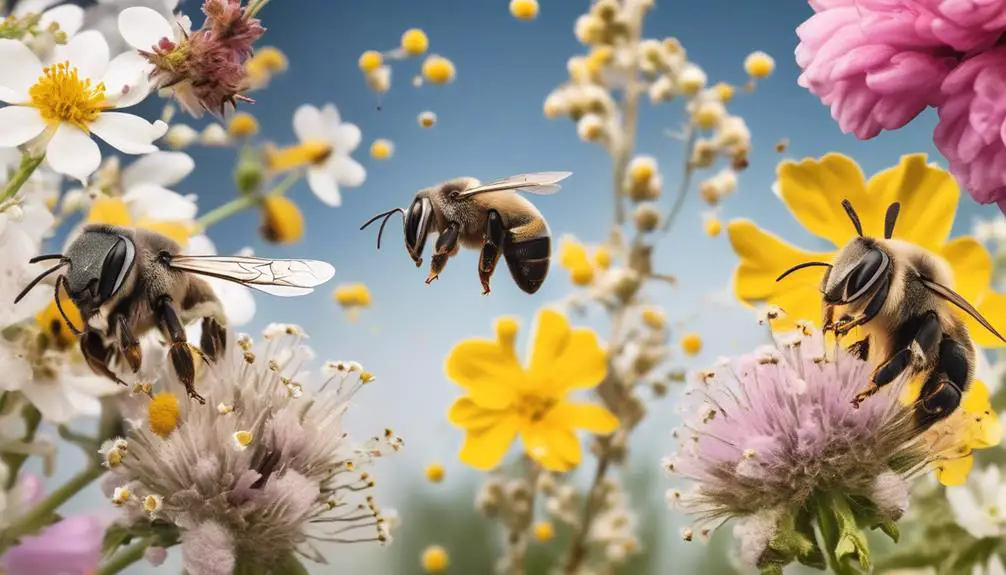
Now that we've examined the impressive pollination efficiency of Leafcutter bees, let's compare it with the rates of other bee species to understand their unique roles in our ecosystems. For this, we'll focus on two other species: Mason bees and Honeybees.
Bee Species | Average Pollination Rate (%) | Major Role in Ecosystem |
|---|---|---|
Leafcutter Bees | 95 | Pollinate wildflowers, vegetables, fruits |
Mason Bees | 96 | Pollinate fruits, nuts, flowers |
Honeybees | 85 | Produce honey, pollinate crops |
As you can see, Mason bees edge out Leafcutters slightly in terms of pollination rate. They're also incredibly efficient at pollinating fruits, nuts, and flowers. On the other hand, Honeybees, despite a slightly lower pollination rate, play a vital role in crop pollination and honey production.
Each bee species contributes uniquely to ecosystem health and biodiversity. Their pollination rates and roles underline the importance of conserving all bee species. Understanding these differences helps us appreciate the delicate balance of our ecosystems and the crucial role bees play in it. So, next time you enjoy a honey toast or a juicy apple, remember the hardworking bees that made it possible.
The Impact on Ecosystem Health

Bees' tireless work in pollinating plants isn't just about producing honey and fruits; it's a significant contributor to the health and diversity of our ecosystems. The role of mason and leafcutter bees in this crucial process can't be underestimated. They're known as solitary bees, meaning they don't live in colonies but work independently, each female constructing her own nest.
Yet, despite working alone, these bees are incredibly effective pollinators. Mason and leafcutter bees' high pollination rate has a direct impact on ecosystem health. They enhance the genetic diversity of plants by transferring pollen from the male anthers of a flower to the female stigma of another. This cross-pollination results in a greater variety of plants, which supports a wider range of wildlife and contributes to overall biodiversity.
Moreover, these bees help in maintaining food security. Many of the fruits, vegetables, and nuts we consume wouldn't exist without their pollination services. So, when you're enjoying a fresh apple or almond, remember the work of these industrious pollinators. Their role in our ecosystems is indeed vital and deserves our respect and protection.
Conclusion
You've learned that mason and leafcutter bees are incredible pollinators, with mason bees pollinating at a rate 100 times more than honey bees.
While leafcutter bees don't match mason bees, they still pollinate more effectively than honey bees.
These rates directly impact our ecosystems, highlighting the critical role these bees play in maintaining plant biodiversity.
So, next time you see these bees, appreciate their hard work in keeping our world vibrant and diverse.

